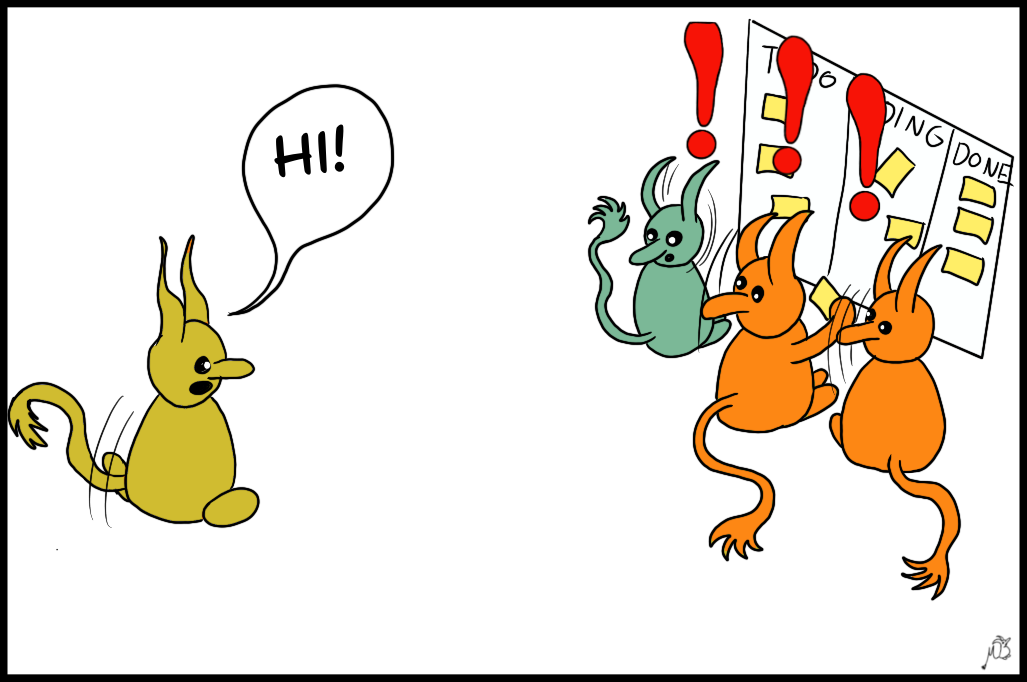Update 2021-11-13
Since I published this illustration more than one year ago I have had the pleasure of creating a new version of the illustration. This new version and the old one is available in high resolution for your use. You can find it in the free material.
Original text
I have been fascinated by the work of Dave Snowden and the Cynefin sense making framework for a long time and a few days ago I got the idea that it would be fun to illustrate the Cynefin framework using the Vige surrounding. In the picture I wanted to capture some of the more important behaviors in each domain and also the fact that the “burden” of structure/constraints that you put on while you move between the different domains increases. I got to work, after some trial and errors I remembered that I had seen a 3D version of Cynefin and with some research I found it. This version was very helpful in succeeding with my goal, as Rob England (the creator of the original 3D version) himself writes.
The vertical axis is “negentropy”: energy, order. It takes energy to make a system chaotic, it settles into complex. Dave Snowden himself made this improvement to the picture. He approved of this 3D view of Cynefin.
So, with the help from my colleagues at Squeed I got this my first version of the picture done. Thanks everyone!
By the way, if you have any suggestions on improving the illustration? Some thoughts that I have myself is to change the cliff to something man made (in this case I guess it is goblin/troll made) to better represent that it is built in some way and can be easily broken if not maintained.
Here you can find the blog post from Dave Snowden when he comments on the original 3D version from Rob England Cognitive Edge








